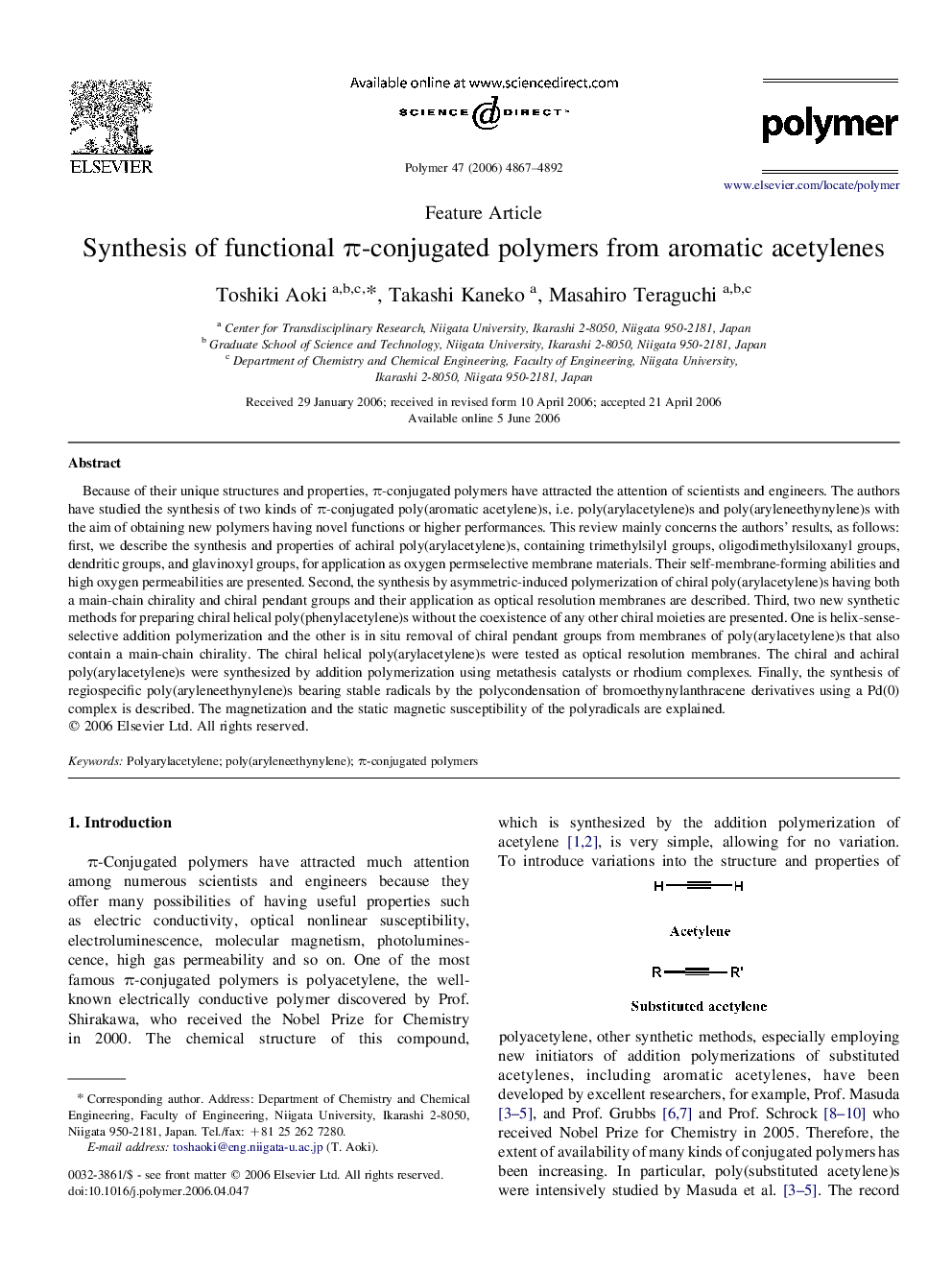| Article ID | Journal | Published Year | Pages | File Type |
|---|---|---|---|---|
| 5189352 | Polymer | 2006 | 26 Pages |
Abstract
Because of their unique structures and properties, Ï-conjugated polymers have attracted the attention of scientists and engineers. The authors have studied the synthesis of two kinds of Ï-conjugated poly(aromatic acetylene)s, i.e. poly(arylacetylene)s and poly(aryleneethynylene)s with the aim of obtaining new polymers having novel functions or higher performances. This review mainly concerns the authors' results, as follows: first, we describe the synthesis and properties of achiral poly(arylacetylene)s, containing trimethylsilyl groups, oligodimethylsiloxanyl groups, dendritic groups, and glavinoxyl groups, for application as oxygen permselective membrane materials. Their self-membrane-forming abilities and high oxygen permeabilities are presented. Second, the synthesis by asymmetric-induced polymerization of chiral poly(arylacetylene)s having both a main-chain chirality and chiral pendant groups and their application as optical resolution membranes are described. Third, two new synthetic methods for preparing chiral helical poly(phenylacetylene)s without the coexistence of any other chiral moieties are presented. One is helix-sense-selective addition polymerization and the other is in situ removal of chiral pendant groups from membranes of poly(arylacetylene)s that also contain a main-chain chirality. The chiral helical poly(arylacetylene)s were tested as optical resolution membranes. The chiral and achiral poly(arylacetylene)s were synthesized by addition polymerization using metathesis catalysts or rhodium complexes. Finally, the synthesis of regiospecific poly(aryleneethynylene)s bearing stable radicals by the polycondensation of bromoethynylanthracene derivatives using a Pd(0) complex is described. The magnetization and the static magnetic susceptibility of the polyradicals are explained.
Related Topics
Physical Sciences and Engineering
Chemistry
Organic Chemistry
Authors
Toshiki Aoki, Takashi Kaneko, Masahiro Teraguchi,
